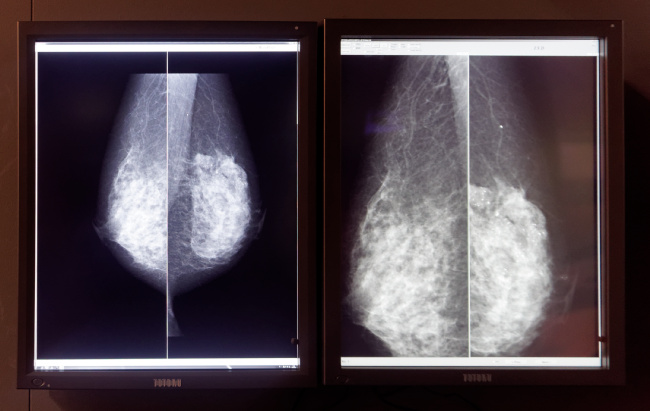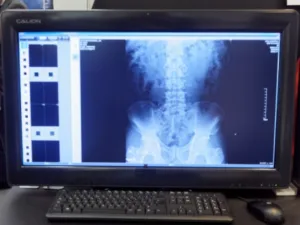![]() Beacon’s 8 input 55″ monitorBeacon of Shenzen was showing an eight input 55″ display with UltraHD resolution. The monitor is designed for medical collaboration and can use PIP technology to show all of the inputs. The company told us that there was no change in its radiology displays since last year’s event. The firm is also working on collaboration displays that have touch integrated.
Beacon’s 8 input 55″ monitorBeacon of Shenzen was showing an eight input 55″ display with UltraHD resolution. The monitor is designed for medical collaboration and can use PIP technology to show all of the inputs. The company told us that there was no change in its radiology displays since last year’s event. The firm is also working on collaboration displays that have touch integrated.
Kostec of Korea had nothing new to show us last year, but this time had a new 31″ Dicom diagnostic monitor with 4096 x 2160 (8 megapixels) which is designed to allow the showing of lower resolution console images on parts of the display along with dual 3 MP radiology images. Brightness is 850 cd/m² in uncalibrated mode and contrast is 1,000:1, while the calibrated brightness is 500 cd/m².
The D310ZLE is still in development and uses an AH-IPS display. There is a DisplayPort input (with MST and loop through) and five HDMI inputs (four with HDMI 1.4 and one with HDMI 2.0).
Also at the development stage is the D285YLE which is a 28.5″ monitor with 3280 x 2048 pixels, 800 cd/m² in uncalibrated mode and contrast of 800:1. As with the bigger display, the calibrated brightness is 500 cd/m². It has the same inputs as the larger monitor.
 Kostec’s D310ZLE looked like a prototype industrial design
Kostec’s D310ZLE looked like a prototype industrial design
Rein Medical Systems has been working as a seller of Totoku medical monitors for a long time. At the event, it was on the side of the Totoku booth but was highlighting its own AIO medical PCs which are designed for challenging environments such as operating rooms and intensive care rooms. The AIOs are completely sealed, with no fans. They use the latest Skylake Intel Core i5 and i7 processors. It has versions with 21.5″ and 27″ FullHD displays or 24″ 1920 x 1200 (16:10) format. Later the company will add 31.5″ and 27″ UltraHD options. Although there is support for Dicom grey scale, the classification of the systems is for review rather than diagnostics. Touch is supported using procap technology. The company also has 19″ to 55″ in-wall and on-wall systems.
Totoku had a new 21.3″ monochrome monitor with 13.7MP and very high brightness of 1,200 cd/m² of brightness and 1,600:1 contrast. The high brightness and good contrast did seem to give more clarity to the images displayed, compared to traditional monitors, so the company is very bullish about the prospects for it. The monitor is an engineering sample, although the company would like to be able to launch the monitor at RSNA.
 Totoku’s high res mono monitor (left) seems to give clearer infomation than standard ones. Image:Meko
Totoku’s high res mono monitor (left) seems to give clearer infomation than standard ones. Image:Meko

